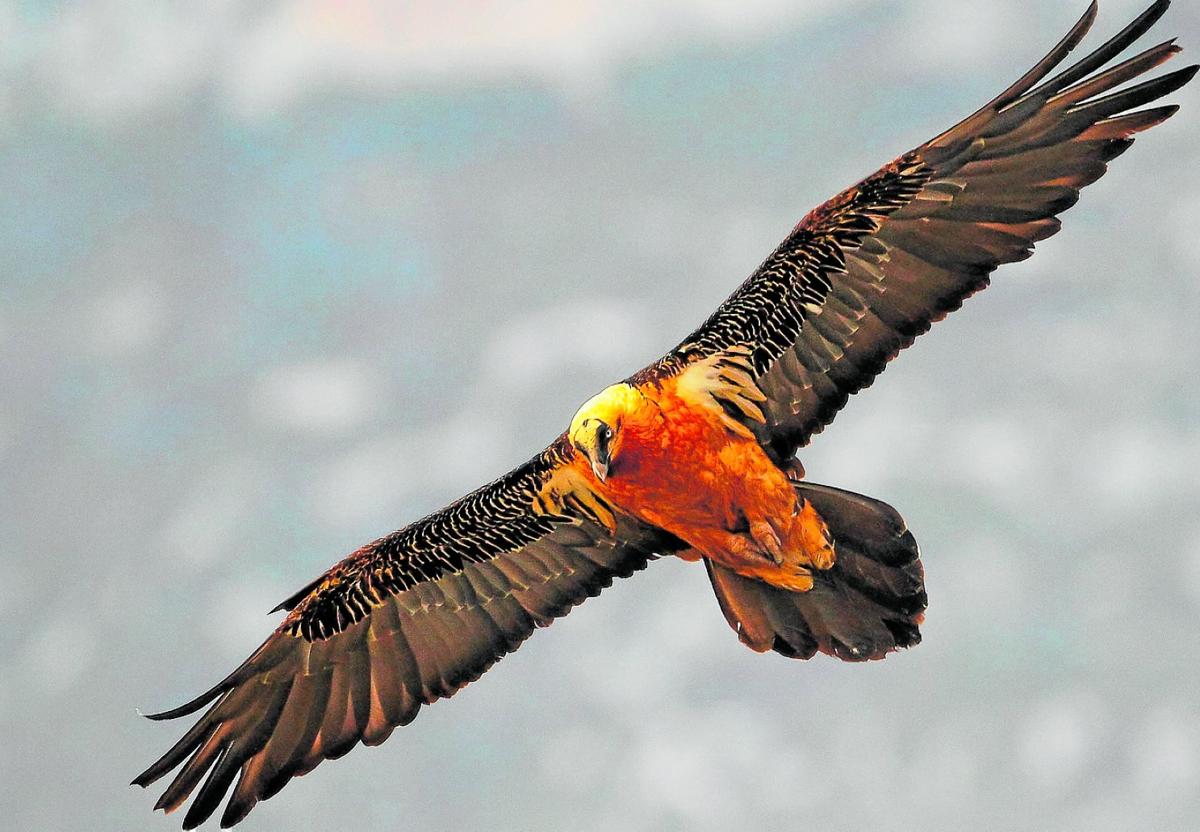

Sections
Highlight

José Luis Piedra
Seville
Monday, 21 April 2025, 15:49
Nature works miracles and, if human hands can contribute to this endeavour, the result is much more than feasible. This is what is happening with the bearded vulture, a spectacular scavenger bird that disappeared from the skies of Andalucía in the 1980s.
This unique and majestic bird, which only feeds on bones, is now making a strong comeback after 30 years of a pioneering programme of reintroduction supported by the Junta de Andalucía. This project has enabled its population to be revived with around 90 birds being released in the region since 2006.
Thanks to this initiative, some 16 chicks have been born in the wild in recent years from different pairs formed by the specimens that were released into the wild. In 2024 the record number of chicks born in one year was broken with a total of 11 hatchings, according to reports from the regional environment ministry.
The programme began to be drawn up in the 1990s after the disappearance in 1986 of the last bearded vulture to be sighted in Andalucía. This last sighting was in the Cazorla, Segura y las Villas Natural Park, which was also the site chosen to start up this recovery programme. It was not until 2006 that the first reintroduction took place three specimens bred in captivity were released into the wild.
The species managed to breed in the wild in Andalucía in 2015 with the birth of a female, Esperanza, daughter of Tono, who was the first surviving bearded vulture from the first reintroduction. A decade later, Esperanza has managed to raise a chick that is the first 'grandchild' of the reintroduced batch, a great milestone in the conservation of this species following its previous extinction.
The breeding programme in the wild is progressing favourably and nine locations have already confirmed eggs being laid.
The birds released carry a ring with a GPS transmitter that allows the programme's technical team to know their location, recording long-distance movements in their flights from Andalucía to the great mountain ranges of northern Spain, reaching Portugal and France and even detecting on one occasion the crossing of one bird to the African continent via the Strait of Gibraltar. These birds move easily, taking advantage of the air currents that allow them to make these long journeys effortlessly.
The last reintroductions took place last year with seven chicks released in the Sierra de Cazorla and another three in the Sierra Nevada. The release technique is called 'hacking' (a gradual release into the wild), which consists of releasing the young specimens in a space created at altitude in an opening, cavity or small cave, simulating the natural characteristics of the nests built by this species in the wild. The birds are released when they are about 90 days old and when they are about to start flying and are able to feed themselves.
By means of this technique, the juveniles begin to identify with the nest and its surroundings as their place of birth and this makes them stick with that territory as their habitat, making it possible for them to form a pair and produce offspring.
This bird is very special and complex, with a long lifespan (it can live up to 40 years and even longer in captivity). Its procreation capacity is limited, as they do not breed until they are 10 years old and only lay two eggs per nest, and only one of them survives. The Gudalentín breeding centre, supported by the Junta de Andalucía in the province of Jaen, has played a decisive role in the success of this reintroduction programme, as it has provided a large number of the specimens released into the wild.
Publicidad
Publicidad
Publicidad
Publicidad
Esta funcionalidad es exclusiva para registrados.
Reporta un error en esta noticia

Debido a un error no hemos podido dar de alta tu suscripción.
Por favor, ponte en contacto con Atención al Cliente.

¡Bienvenido a SURINENGLISH!

Tu suscripción con Google se ha realizado correctamente, pero ya tenías otra suscripción activa en SURINENGLISH.
Déjanos tus datos y nos pondremos en contacto contigo para analizar tu caso

¡Tu suscripción con Google se ha realizado correctamente!
La compra se ha asociado al siguiente email
Comentar es una ventaja exclusiva para registrados
¿Ya eres registrado?
Inicia sesiónNecesitas ser suscriptor para poder votar.